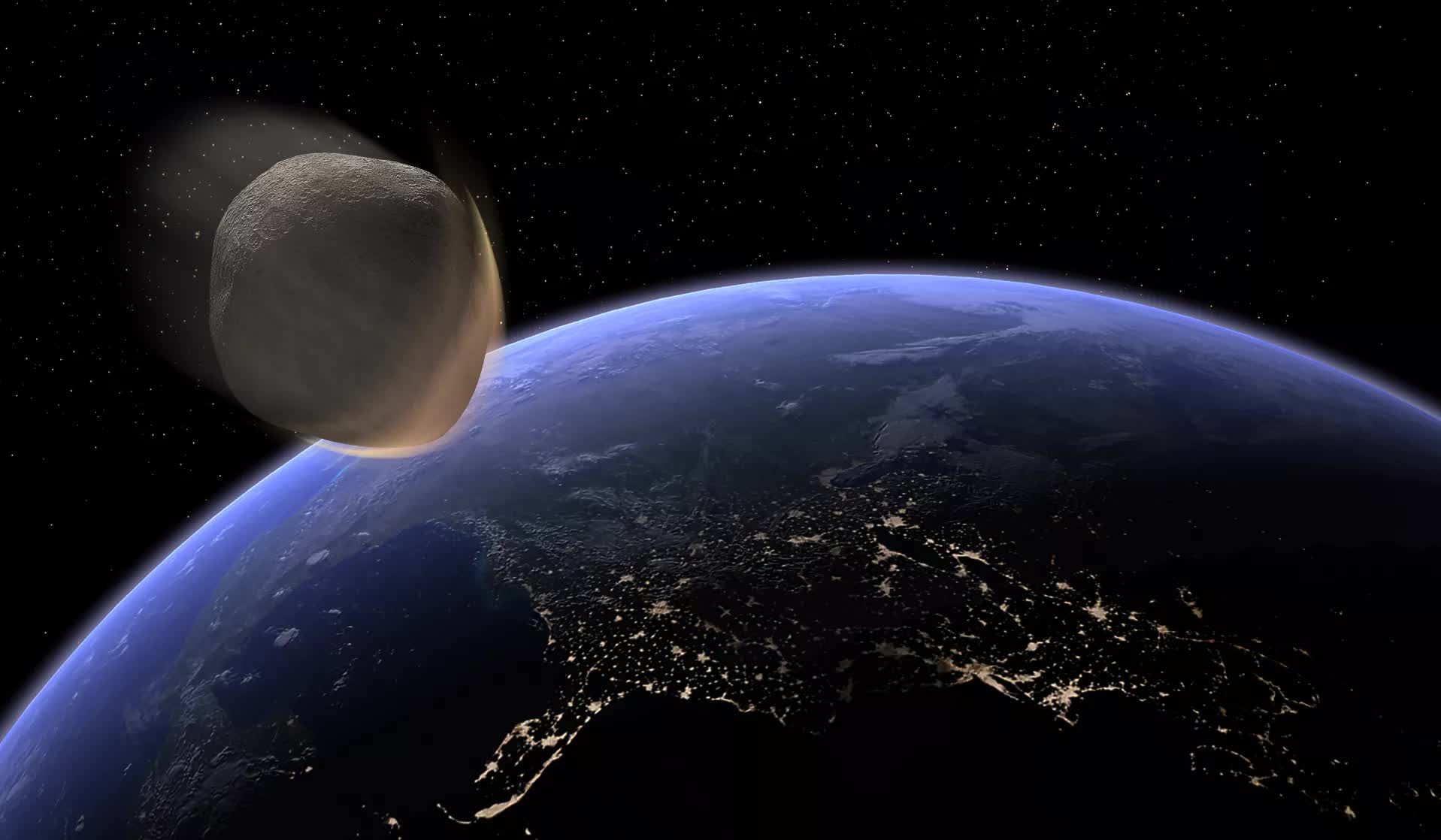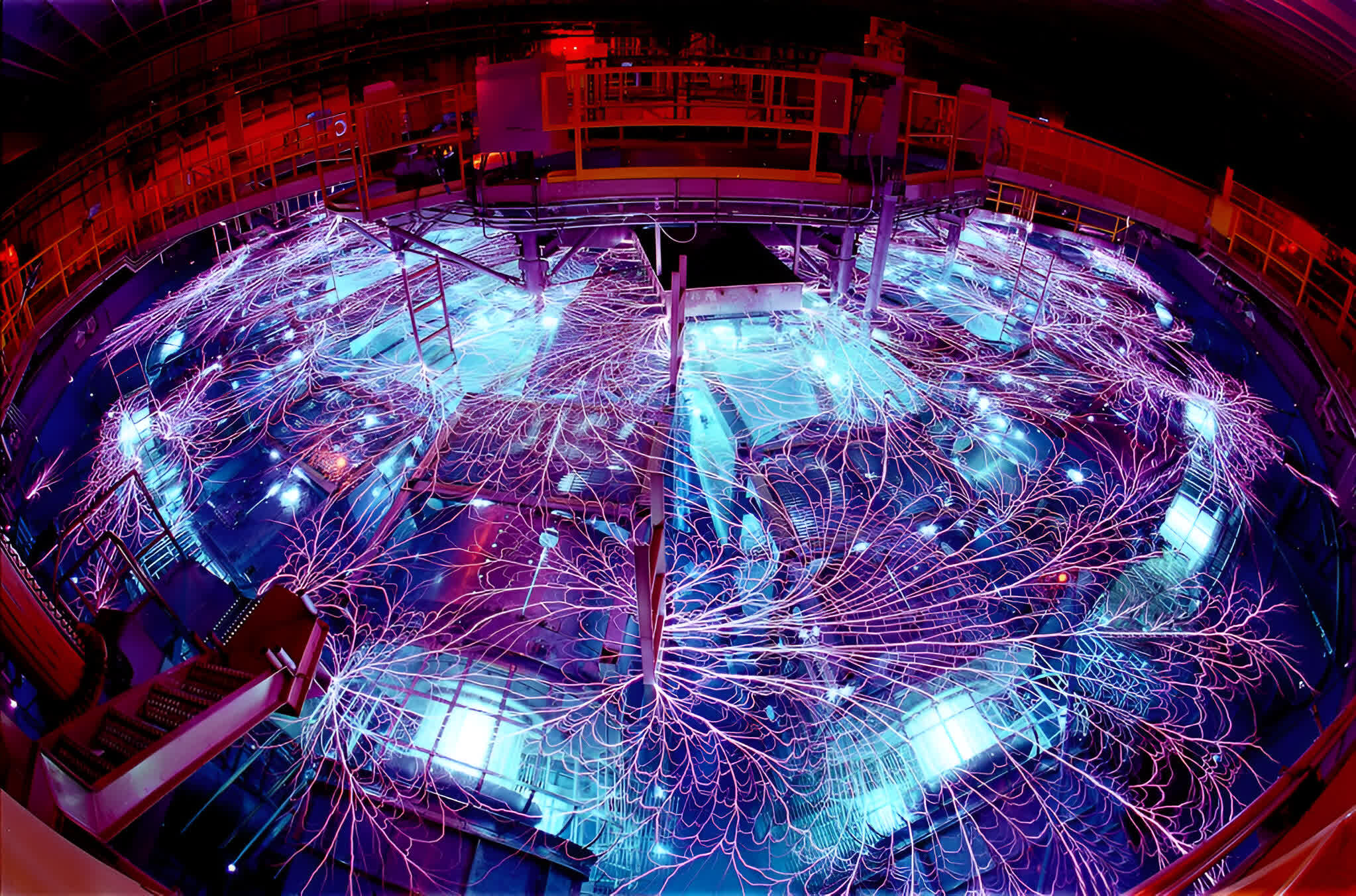Why it matters: The concept of launching nukes into space to knock asteroids off course or destroy them completely may not sound foreign thanks to numerous sci-fi films popularizing it. But the lack of atmosphere in space nerfs nukes' power considerably, so the idea isn't so easy to pull off. Now, researchers at Sandia National Labs have come up with a new way to compensate for this shortcoming.
The study, published in Nature Physics by researchers at Sandia National Laboratories, simulates the forces of a nuclear blast on asteroid materials using something they call the "Z machine." This room-sized machine is the world's most powerful pulsed power device, able to deliver a concentration of electrical energy that can melt even diamonds.
By blasting a huge surge of electricity into argon gas, the Z machine generates a super-heated plasma similar to the sun's surface. This plasma also emits powerful X-ray radiation bursts comparable to those from a nuclear explosion in space. The researchers then used these X-rays to bombard and simulate the effects on miniature asteroid samples, mimicking scenarios of deflecting real asteroids with nuclear weapons.
For the simulation, they suspended tiny simulated "asteroids" made of silica inside the target chamber using pieces of incredibly thin foil. When the machine fired, the foils immediately vaporized, leaving the silica samples floating in a weightless state unaffected by gravity for a split second. Matter on the surface of the samples vaporized, too, creating jets that propelled them backward.

The whole process generated data that was captured by sensitive instruments. Using that data, the team can model how bigger asteroids might move or break apart from the shockwaves and heat of an actual nuclear blast.
"To most people, the danger from asteroids seems remote," said Moore. "But our planet is hit by BB-sized asteroids every day. We call them shooting stars. We don't want to wait for a large asteroid to show up and then scramble for the right method to deflect it."
Of course, this is still pretty preliminary stuff. Real asteroids aren't made of only silica – they're mineral mixes and sometimes even clusters of debris held together by gravity. The researchers will have to run many more simulations accounting for those complexities before we can seriously talk about launching nukes as a viable asteroid defense plan.
There are also plenty of reasons why nuking an asteroid might be a terrible idea that makes the situation worse. An explosive blast could potentially just break a big rock into smaller, but still devastating, chunks raining down on Earth.
However, thanks to the capabilities of the Z machine, at least now scientists have a way to systematically test these concepts without needing to launch multi-billion dollar space missions every time.
Image credit: Kevin Gill, Randy Montoya
